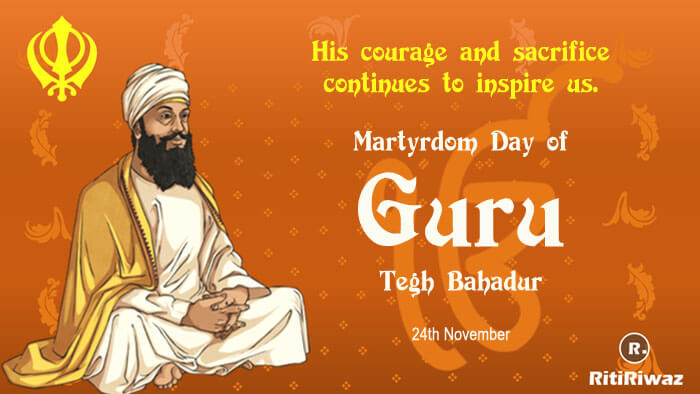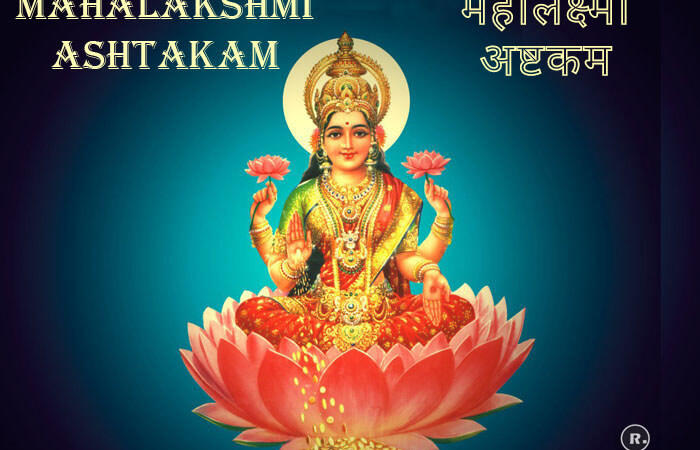Guru Tegh Bahadur Martyrdom Day

Shaheedi Divas or Martyrdom Day is observed by the Sikh community on 24th November every year to remember the sacrifice of Guru Tegh Bahadur. It is also said by some historians that Aurangzeb had beheaded Guru Tegh Bahadur on 11th November 1675. He sacrificed his life to protect religion, human values, ideals, and principles.
In Sikhism, his sacrifice is remembered with great reverence. In the late 17th century, then Mughal emperor Aurangzeb imposed the Sharia law across his empire in which non-Muslims were slapped with the Jizya tax. Guru Tegh’s role was instrumental in the then Sikh community to protect their faith and beliefs against forced conversions of non-Muslims. Guru Tegh Bahadur stood against the Aurangzeb and objected to the conversion to Islam.
Guruji addressed the Pandits, “Go and tell Aurangzeb that if he can convert Guru Tegh Bahadar to Islam, they will all convert. Otherwise, he should leave them alone.”
Sri Guru Teg Bahadur Ji (April 1, 1621-November 11, 1675) resisted the forced conversion of Hindus/Kashmiri Pandits and non-Muslims to Islam and was martyred in 1675 on the orders of the then Mughal Emperor Aurangzeb. His associates also refused to convert and attained martyrdom at the hands of the Mughals. Bhai Mati Das was sawed into pieces while Bhai Dayal Das was thrown into a cauldron of boiling water. Other associates faced a similar fate in front of his eyes yet he refused to give in. Guru Tegh Bahadur was then beheaded in public on 24th November 1675.
Guru Teg Bahadur was born in Amritsar and was the fifth son of Guru Hargobind Ji. He founded the city of Anandpur which later became a major center of Sikh temples. Guru Tegh Bahadur is indeed the ideal example of humility, piety, courage, and compassion. His ideas are reflected through his life and poetical composition. He is accredited with composing various hymns which also include ‘Saloks’ or couplets at the end of ‘Guru Granth Sahib’. His works, thoughts, and writings cover a variety of subjects including human attachments, nature of God, deliverance, mind, body, service, death, dignity, and sorrow.
Tegh called his followers to be liberated from attachment, fear, and dependence. He had become Guru on 16 April 1664, following the footsteps of his grand-nephew and the eighth Guru, Guru Har Krishan Ji. He toured across the country to teach about religious freedom and his thoughts and writings are included in the Guru Granth Sahib. The Guru Granth Sahib contains 116 poetic hymns composed by him.
Guru Tegh Bahadur Ji had made his supreme sacrifice to protect his religion and to stop this oppression. A number of Sikh temples have been built in honor of Guru Tegh Bahadur. Four main Gurudwara in memory of Guru Tegh Bahadur ji are.
-
Gurudwara Sis Ganj Sahib marks the place of his execution, in front of a massive crowd.
-
Gurdwara Rakab Ganj Sahib marks the places of cremation of his body. Bhai Jaita Ji took the Guru’s head to Anandpur, the city the guru had founded, while Bhai Lakhi Shah Vanjara Ji took the body to his village, Rakab Ganj, and cremated the body by setting his own house on fire, to avoid arousing the suspicion of Mughal soldiers. Hence the name of the gurudwara build at this site is Gurdwara Rakab Ganj Sahib.
-
The severed head (“Sis” in Hindi or Punjabi) of Guru Tegh Bahadur was brought to Anandpur Sahib by Bhai Jaita, another disciple of the Guru. Gurudwara named Gurudwara Sis Ganj Sahib at Ambala City where that man halt for a night with Teg Bahadur’s head after that he went for Anandpur Sahib in Punjab.
-
Another gurudwara by the same name, Gurudwara Sisganj Sahib at Anandpur Sahib in Punjab, marks this site, where, in November 1675, the head of the martyred Guru Teg Bahadur, brought by Bhai Jaita was cremated.
The execution hardened the resolve of Sikhs against religious oppression and persecution and helped all Sikh Panths consolidate to make the protection of human rights central to its Sikh identity. Inspired by him, his nine-year-old son, Guru Gobind Singh Ji, eventually organized the Sikh group into a distinct, formal, symbol-patterned community that came to be known as Khalsa (Martial) identity.






